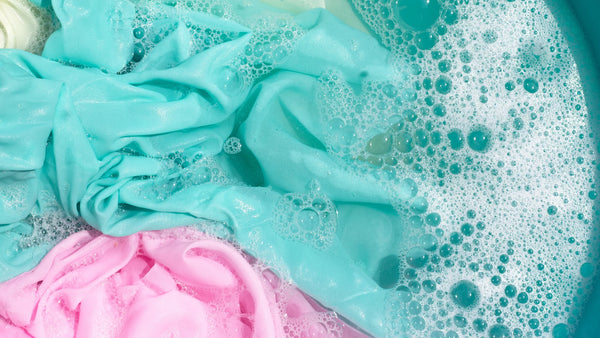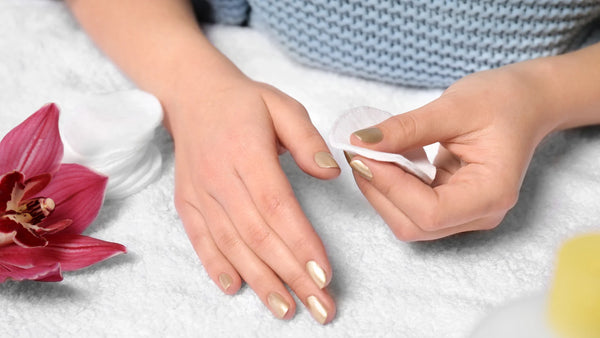Key Takeaways
- Proper washing of acrylic fabrics is crucial to preserve their quality and durability.
- Use lukewarm water, mild detergent and gentle cycle for machine wash.
- Avoid hot water which can damage acrylic fibers.
- After washing, air dry or low temperature to prevent shrinkage.
The French brand The Oversized Hoodie® 🇫🇷 is famous for its oversized sweater high-end, certified Oeko-Tex® Standard 100. It is entirely vegan, free of toxic and chemical substances, and promotes a cruelty-free approach towards animals. These clothes which have also been honored by the “Confiance Textile” Quality Label, are distinguished by their incomparable softness and their excellent quality-price ratio, providing a feeling of unrivaled comfort.
Introduction
acrylic is a versatile, soft and durable synthetic fiber, widely used in the textile industry to make clothing, linens and more. However, like any synthetic material, acrylic requires special maintenance to maintain its properties over time.
In this complete guide, we will reveal to you all the tips essential for optimal washing and drying of your acrylic fabrics .

At The Oversized Hoodie®, we learned the hard way the importance of properly washing acrylic textiles.
6 months ago, a customer contacted us, disappointed that her favorite oversized sweater had shrunk significantly after washing it too hot. We explained the precautions to take and gave him a new sweater. A gift that she really appreciated!
Since then, we have insisted to our community on respecting the washing instructions specific to acrylic.

- 85% minimum acrylonitrile is required in the composition of the acrylic to be considered a legitimate acrylic fiber. [1]
- 30% more energy is required to produce acrylic compared to polyester. [2]
- 40°C is the maximum recommended temperature for machine washing acrylic clothing. [3]
Also read: How to Wash Polyester ? Washing Secrets
Understanding acrylic as a textile material
Composition and characteristics of acrylic fiber
acrylic is a synthetic fiber derived from petroleum, composed mainly of acrylonitrile, a polymer obtained by chemical reaction . This fiber has many advantages, including its softness, its lightness, its resistance to creases and its thermal insulation.
The advantages and disadvantages of acrylic
Among the main advantages of acrylic, we can cite its low cost, its durability and its ease of interview. However, this synthetic fiber also has some disadvantages, such as its tendency to pilling, its lack of breathability and its impact environmental linked to its production based on non-renewable resources.
As the founder of The Oversized Hoodie®, I have seen the many benefits of acrylic for making comfortable and durable clothing. However, like any synthetic fiber, it requires special maintenance which we will detail in the next sections.
— Geoffrey, Founder of The Oversized Hoodie®
Also read: How to avoid pilling on a new sweater ?
Importance of Proper Washing for Acrylic Fabrics
Improper washing of acrylic fabrics can cause many problems, such as shrinkage, warping, excessive pilling or even discoloration. This is why it is essential to follow the care instructions specific to this synthetic fiber.
Preparing for Washing
Sorting and checking labels
Before washing your acrylic clothing, it is crucial to read the care labels for the manufacturer's specific instructions. Also sort light fabrics from dark fabrics to avoid unwanted color transfers.
Choosing the appropriate detergent
Opt for a mild detergent, preferably liquid and without harsh bleaching agents that could damage the acrylic fibers. detergents intended for delicate fabrics are ideal.

Also read: Washing at 40 degrees: How to avoid shrinking your clothes ?
Washing Methods
Machine wash
For machine washing of acrylic textiles, choose a gentle cycle at low temperature (maximum 30°C). Reduced spinning is also recommended to minimize friction. Do not overload the drum to avoid deformation.
Hand wash
If you prefer to wash your acrylic clothing by hand, use warm water and a mild soap. Avoid soaking them for too long and twisting them to avoid damaging them. Rinse thoroughly.
The ideal temperature for washing acrylic
The acrylic fiber is sensitive to excessive heat, which is why it is recommended not to exceed 30°C when machine wash. Too high temperature could cause shrinkage or warping of fabrics.
For hand washing, opt for lukewarm water but not hot water. Absolutely avoid boiling water which will irreparably damage the synthetic fibers.

Also read: What pilling material ?
Drying and Maintenance
Drying techniques
After washing, it is crucial to dry your acrylic clothing to preserve its shape and appearance.
Tumble drying: is it possible ?
tumble drying is not recommended for acrylic textiles because the intense heat risks making them shrink significantly. Prefer air drying.
The importance of removing dry clothes from the dryer quickly
If you still decide to use the tumble dryer, be sure to remove your acrylic clothing as soon as they are dry. Prolonged exposure to heat could damage them.
Tips for ironing and storage
The ironing of acrylic fabrics must be done at low temperature, at the "Silk" or "Synthetic" setting. A temperature that is too high would leave unwanted marks.
For storage, carefully fold your clothes and store them in a dry and ventilated place. Avoid compressing them so as not to crease them.

Also read: Polyester and Bouloche: Tips and Solutions
Treat Difficult Stains
Solutions for common stains
Even with the best care, your acrylic clothing may become stained. Fortunately, many solutions exist to overcome the most stubborn dirt.
For stains from fruit, wine or coffee, start by rinsing them with water cold. Next, apply a mixture of soapy water and white vinegar to the affected area and scrub gently with a soft-bristled brush.
greasy stains such as those from oil or make-up respond well to baking soda. Sprinkle it on the stain, add a few drops of water to form a paste and rub in circular motions before rinsing.
Also read: How to remove stains from polyester ?
Specific precautions for acrylic fabrics
If traditional methods don't work, there are tips specific to acrylic fibers. Avoid harsh chemicals which could damage them.
For dried stains, use diluted isopropyl alcohol. Dab the area, leave for a few minutes then rinse thoroughly. You can also try a mixture of ammonia and white vinegar with a pinch of salt.
In case of acrylic paint stain, opt for window cleaner or dishwashing liquid. Apply it to the soiled area, rub with a sponge and rinse thoroughly.

Also read: How to shrink a sweater ?
Care of acrylic sweaters
Tips to prevent pilling on acrylic sweaters
acrylic sweaters tend to form unsightly little lint over time. To avoid this pilling, follow these tips:
- Wash them inside out and hand with mild soap and warm water.
- Dry them flat on a towel, turning them regularly.
- Use a razor or pilling brush to remove lint.
- Avoid the tumble dryer which accelerates the formation of pilling.
- Store them out of direct sunlight to prevent degradation of the fibers.
By following these recommendations, your acrylic sweaters will keep their impeccable appearance for longer!
Over the years, we have perfected our acrylic sweater care techniques at The Oversized Hoodie®. Here are the valuable tips that we share with you to prolong their impeccable appearance.
— Geoffrey, Founder of The Oversized Hoodie®
Also read: What is the best material for a sweater ?
Conclusion
Proper washing and care of acrylic fabrics are essential to preserve their quality and durability in time. By following the tips detailed in this guide, you will avoid excessive shrinkage, warping and pilling of your clothing and household linen in acrylic.
Remember the key points: use a gentle cycle at low temperature, preferably by hand with water lukewarm and a mild detergent. Skip the tumble dryer and opt for air drying. With the right gestures, your acrylic textiles will keep their impeccable appearance for longer!
| Material | Washing method | Water temperature | Drying |
|---|---|---|---|
| Acrylic | Machine wash (gentle cycle) or hand wash with mild detergent | Maximum 30°C | Air dry, avoid tumble drying |
Although acrylic is a synthetic fiber derived from oil, it remains one of the most environmentally friendly among the synthetic materials. Its manufacturing process emits less carbon dioxide than other spuns such as polyester. In addition, its longer lifespan reduces waste.
For maintenance even more ecological, choose natural detergents without chemical agents.And why not opt for natural fibers such as organic cotton or wool ? They remain the most popular textile materials virtuous for the planet.
FAQ
What is acrylic material ?
acrylic is a synthetic fiber derived from petroleum, composed mainly of acrylonitrile. It is light, soft, wrinkle-resistant and insulating.
Does acrylic shrink in the dryer ?
Yes, the intense heat from the tumble dryer can cause significant shrinkage of acrylic fabrics. It is recommended to dry them in the open air.
Does acrylic fabric shrink ?
acrylic clothing tends to shrink if exposed to too high a heat source during washing or drying. A gentle cycle and air drying are recommended.
Can you wash acrylic clothes ?
Yes, acrylic textiles are washable but require special precautions such as the use of a delicate program, 'a low temperature and a mild detergent.
How to remove acrylic paint from clothing ?
To remove an acrylic paint stain, use window cleaner or dishwashing liquid. Apply to the soiled area, rub with a sponge and rinse thoroughly.
How to remove an encrusted paint stain ?
The encrusted stains respond well to a mixture of ammonia, white vinegar and a pinch of salt. Leave on for a few minutes before rinsing carefully.
Acrylic or polyester ?
acrylic is softer, more warm and more resistant than polyester. It is also more environmentally friendly with fewer CO2 emissions during its production.
Does acrylic paint wash off ?
No, acrylic paint generally does not completely wash off once dried on a fabric. Pre-treatment with a suitable stain remover is necessary.
How to wash polyester ?
polyester is ideally machine washable at 30°C maximum with reduced spinning. Avoid hot water which could cause it to shrink. tumble drying is possible.
How to clean acrylic paint ?
To clean an acrylic paint stain, start by rinsing it with cold water. Then apply a soapy mixture and scrub with a soft-bristled brush before rinsing well.
References
"What you need to know about cotton and acrylic fabrics", Comfort International
"Acrylic and polyacrylic in textiles", Dreamact






